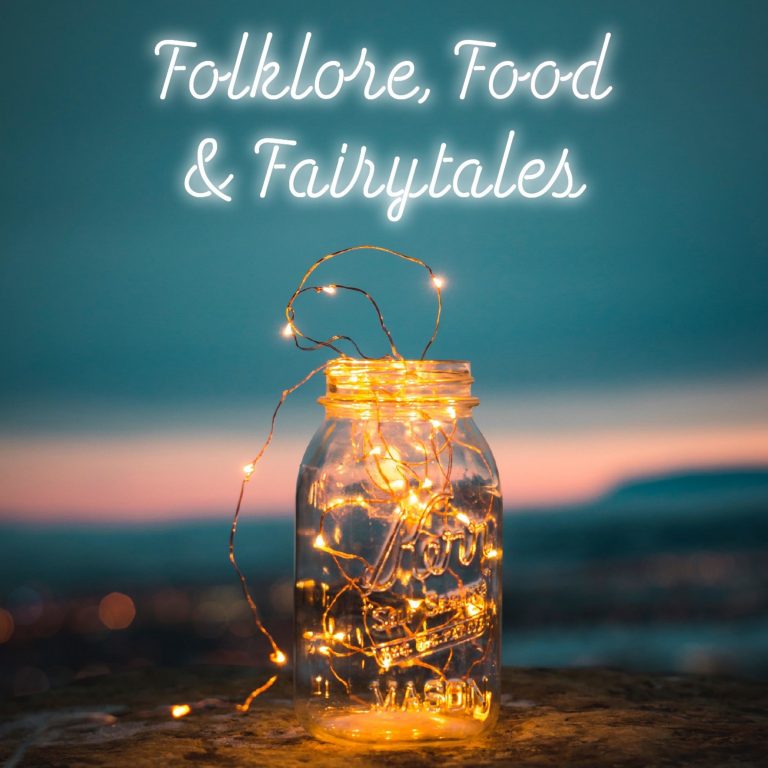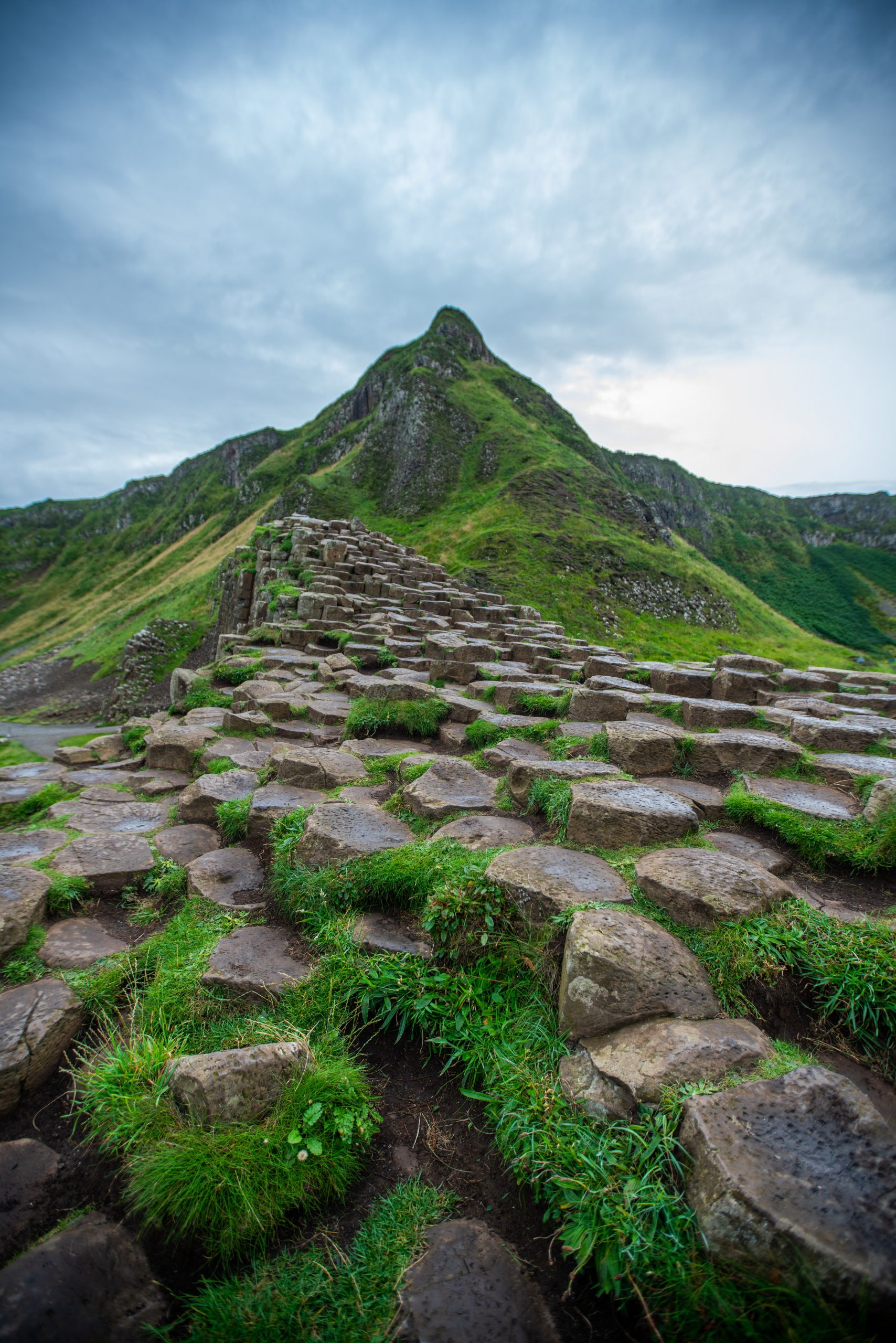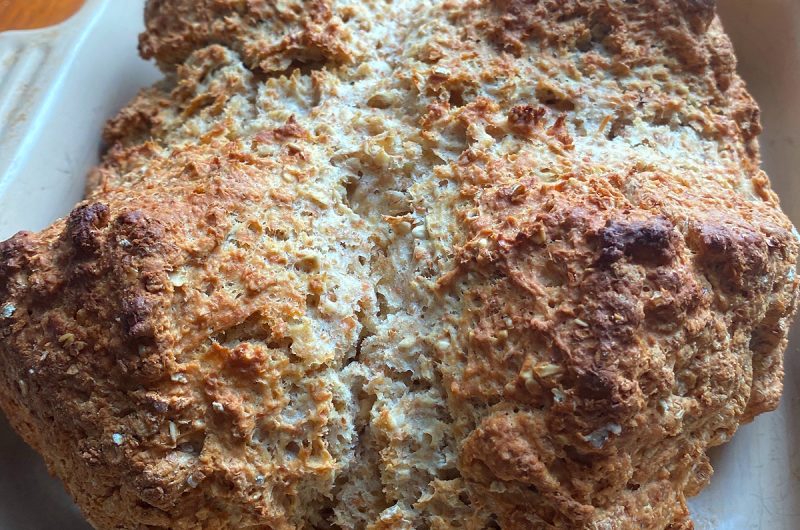In which we confirm that a clever, witty woman can save the day, that food adulteration in soda bread is occasionally warranted and that outwitting a giant can save you a lot of DIY.
In which we confirm that a clever, witty woman can save the day, that food adulteration in soda bread is occasionally warranted and that outwitting a giant can save you a lot of DIY.
Today’s story is an Irish tall tale based on the Legend of Knockmany from Celtic Fairy Tales, edited by Joseph Jacobs. Another version is available in Fairy and Folk Tales of the Irish Peasantry by W. B. Yeats.
We also discuss the history of the story, which is not as old as first appears and the origins of the heroes and their ancient sagas.
Finally we investigate the history of bread in Ireland and this week’s recipe
There is some further reading about historic Irish foodways, an analysis of this tale as well as ancient recipes for bread available at my website.

Avoiding Giants
This was one of my favourite stories when I was young. I think it might be because the clever women was the hero really. It also made me laugh because the normal personification of the hero had to hide in a cradle dressed as a baby. This isn’t one of the ancient tales of Ireland even though it has a starring roles for heroes from that time. Finn & Cuchulain (various spellings are available) have been made into figures of fun (Finn even gets turned into a giant) in an Irish tall tale by a master of the art.
This telling is from William Carleton and was collected into a selection of tales by both W B Yeats and Joseph Jacobs. My version is based on the Joseph Jacobs version from Celtic Fairy Tales. I have linked to both editions in the further reading section.
Apparently We Didn’t Invent Satire
Parodies of the ancient sagas were fairy common as early as the 16th Century and we don’t know when this one was first told. William Carleton definitely made it his own even if he didn’t create it. According to Eileen S. Ibarra in an article in Folklore in 1971 ‘[Carleton] was writing was writing in the Irish comic tradition, making full use of fantasy and ridicule to belittle Fionn’. He also used the story as a great opportunity to create mythological beginnings for geographical landmarks in his local area of Knockmany. He starts with highlighting the beauty of view from the top of Cullamore and Knockmany
In the Yeats edition of the story, there is a large rock with a mark as though four fingers and a thumb are imprinted on it. This is supposed to have been the huge pot of butter Oonagh was throwing to her sister which missed and ended up in the valley below Knockmany. Don’t worry, you you didn’t miss a sister in the story. She just doesn’t appear in our version. In the Jacobs version the creation of the well for Oonagh is how a local waterfall was created in Lumford’s Glen
“She then brought Cucullin down to see the place, which was then all one solid rock; and, after looking at it for some time, he cracked his right middle finger nine times, and, stooping down, tore a cleft about four hundred feet deep, and a quarter of a mile in length, which has since been christened by the name of Lumford’s Glen.”
Joseph Jacobs, Legend of Knockmany – Celtic Fairy Tales
Don’t Forget the Ancient Sagas
There are some elements that could have come from the ancient sagas though. The mythical warrior Finn did apparently acquire prophecy from sucking his thumb after burning his finger when handling the Salmon of Knowledge that he had been asked to cook. As an aside, that salmon gets around a lot, appearing in the tales of King Arthur and in older Welsh myths.
Cuchulain is an Irish mythological Demi-god, an incarnation of the God Lugh who is also his father. His mother was mortal. He was possessed of a terrifying battle frenzy but there is no mention until this tale of his strength being in his middle finger. Jacobs suggests that it is another instance of the external soul, common in folktales but I think he might be stretching.
The Magic of Oonagh
Oonagh also uses magic in the form of a charm of three sets of three different coloured plaited threads which guarantee her success in her endeavours. It is possible that the significance lies in the magical combination of the number three. However, threads do appear across the whole of Celtic Mythology. There are the balls of thread used in the underworld and the threads in the web of life between people. These can be seen by those with second sight or others of magical persuasion. There are also Celtic healing charms that are based on different coloured plaited threads. These do seem to be more Scottish than Irish in origin however. In Irish mythology Oonagh was the last High Queen of the Tuatha de Danaan so perhaps that is why this Oonagh has been blessed with these skills. A clever, witty woman should always use all the weapons her arsenal.
So that’s the story; Oonagh rescued her man, got her drafts sorted out, her new well installed as well as batch-baking the bread for the next few days. Women really are excellent at multi-tasking.
Cabbage Monday
I bet you are wondering which part of the dinner am I going to investigate and then cook for you. Butter? Bacon? Cabbage? Bread? Its bread, I couldn’t help it. It plays such a big part in the story. I considered cabbage but thats mostly because I tried the best braised cabbage I have ever eaten last week. Most people would struggle to research cabbage as a vegetable and then make it interesting. I mean, cabbage is glorious but its a bit niche.
Butter was another option but I think its just too broad. Butter essentially makes everything better. I didn’t realise though how important butter and dairy were in Irish food history. I also found out about the different types of butter. This was a big eye-opener but I’m just going to save all that wonderful knowledge for another food history time. Bacon is also excellent but I’m not up for researching it, Northern Europe is essentially very pork centric in a historic sense. Suffice it to say we’ve been eating it for a long time.
Bread Tuesday
So that just leaves bread! I bet it wasn’t that difficult to guess really. If you think that Oonagh was handing over cast iron wrapped in traditional soda bread to Cuchulain though you would be wrong. Well, you might be right when the story was written down but not when it was meant to be set. The earliest mention of using soda in bread appeared in the Irish newspaper, Newry Telegraph, from county Down in 1837.
So, the heroes from the golden age of Irish myth probably weren’t snacking down on it. They were much more likely to be eating oatmeal bread or even barley bread. The second choice was more usually eaten by monks as a penance. These breads were more of a flat cake cooked on a griddle or hot stone heated in the hearth. In ancient times this might have even been wrapped in cabbage leaves and cooked in the smouldering ashes of the fire. There are recipes available for the oat cakes or barley bread (available in further reading. It does seem more likely that this is what Ooonagh would be dishing up to take out Cucuulain’s teeth.
A Touch of Barley?
The recipes did sound intriguing but once I had started researching Irish bread essentially all I wanted to eat was some good soda bread. How did Ireland become so famous for this tasty bread? We need to look at some of the factors. Firstly wheat: wheat didn’t grow well in Ireland, particularly not the high protein wheat needed to make flour suitable for loaves. It was the preserve of the wealthy and white bread wasn’t possible until after the Normans who invented the fine sieves that separated the bran from from the chaff. The native wheat grown in Ireland contains much less protein than those grown in Canada and the US for example.
Beer, Sourdough or Bicarb
Secondly leavening agents: through the centuries Irish bakers used many different leavening agents to make their bread rise. In early Christian times, dough was leavened with barm, a liquid yeast product of beer brewing. Another ancient method employed a sourdough starter, which is a piece of fermented dough left over from a previous baking(I imagine you know this but just in case). Bicarbonate of Soda was invented in the late 18th century and became easy to buy from the 1830s.
Thirdly cooking technologies: It is Iikely that leavened breads cooked at home would be cooked in a bastable. This was a cast iron three-legged pot which would be baked over a fire. It had a flat lid that coals could be place on so the loaf did not need to be turned. It works in a similar way to cooking a loaf inside a big cast iron pot in a modern oven. This was the most popular way too cook the round loaves with a cross marked middle and is common in the south. In the north it is still more common to cook a flatter loaf cooked on a griddle which is cut into segments.
Soda Bread is Born
The combination of cheap raising agent, soft protein in the native wheat and the cooking technologies available for baking was perfect for a bread in a nation that was desperate for cheap, filling food during the potato famine and afterwards. This is not the place to discuss the exploitative farming practices that resulted in the famine but there are many excellent resources available if you want to find out more.
Now back to the recipe, I love this because it gives the perfect combination of crust and tasty soft middle. I use a milk/yoghurt/lemon juice mixture as buttermilk is often tricky to get in the UK. Soda bread is perfect with butter and/or cheese.
Irish Soda Bread
8
servings10
minutes30
minutesDelicious crisp crust with soft tender crumb, perfect with butter and/or cheese.
Ingredients
250g plain white flour
250g plain wholemeal flour
100g porridge oats
1 tsp bicarbonate of soda
1 tsp salt
25g butter, cut in pieces
500ml buttermilk or mixture of yoghurt/milk/lemon juice
Directions
- Preheat the oven to 200C/gas 6/fan 180C and dust a baking sheet with flour. Mix the dry ingredients in a large bowl, then rub in the butter. Pour in the buttermilk and mix it in quickly with a table knife, then bring the dough together very lightly with your fingertips (handle it very, very gently). Now shape it into a flat, round loaf measuring 20cm/8in in diameter.
- Put the loaf on the baking sheet and score a deep cross in the top. (This helps the bread to cook through.) Bake for 30-35 minutes until the bottom of the loaf sounds hollow when tapped. If it isn’t ready after this time, turn it upside down on the baking sheet and bake for a few minutes more.
- Transfer to a wire rack, cover with a clean tea towel (this keeps the crust nice and soft) and leave to cool. To serve, break into quarters, then break or cut each quarter in half to make 8 wedges or slices – or simply slice across. Eat very fresh.
Notes
- Try and use the heaviest oven tray you can.
Further Reading
Celtic Fairy Tales by Joseph Jacobs
Fairy and Folk Tales of the Irish Peasantry by W. B. Yeats
The Comic Character of Fin M’Coul, the Hibernian Hercules, in Carleton’s ‘A Legend of Knockmany’
Ibarra, E. (1971). The Comic Character of Fin M’Coul, the Hibernian Hercules, in Carleton’s ‘A Legend of Knockmany’. Folklore, 82(3), 212-215. Retrieved October 18, 2020, from http://www.jstor.org/stable/1258403
Downey, L., & Stuijts, I. (2013). Overview of historical Irish food products—A.T. Lucas (1960–2) revisited. The Journal of Irish Archaeology, 22, 111-126. Retrieved October 18, 2020, from http://www.jstor.org/stable/jirisarch.22.111
If you have read this far and would like another recipe for a yeasted but No-Knead bread instead of soda bread, try here


